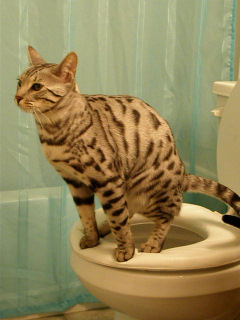Factors Why You Should Never Flush Animal Waste Down the Toilet
Factors Why You Should Never Flush Animal Waste Down the Toilet
Blog Article
Every person seems to have their private opinion in relation to Can You Flush Dog and Cat Poo Down the Toilet?.

When it concerns throwing away waste, specifically animal waste, many people commonly turn to the hassle-free choice of flushing it down the commode. Nevertheless, this seemingly simple service can have major repercussions for the environment and public health. In this post, we'll discover why flushing animal waste down the commode is a bad idea and provide alternative methods for proper disposal.
Introduction
Appropriate waste disposal is important for maintaining environmental sustainability and public health. While it might appear safe to flush animal waste down the toilet, it can lead to numerous concerns, both for the atmosphere and human wellness.
Risks of flushing pet waste
Environmental impact
Purging animal waste presents unsafe germs and pathogens into rivers, which can negatively influence water communities. These pathogens can pollute water resources and damage aquatic life, disrupting delicate ecosystems.
Public health issues
Pet waste has harmful germs such as E. coli and Salmonella, which can posture serious health and wellness threats to human beings. Flushing pet waste down the commode can contaminate water supplies, causing the spread of conditions and infections.
Alternatives to flushing
As opposed to purging pet waste down the commode, there are numerous different disposal approaches that are a lot more eco-friendly and hygienic.
Composting
Composting pet waste is a green method to take care of it. By composting, raw material is broken down into nutrient-rich dirt, which can be utilized to feed gardens and plants.
Land fill disposal
Dealing with pet waste in a garbage dump is an additional alternative. While not as eco-friendly as composting, it is a website safer option to flushing, as it prevents the contamination of water resources.
Pet waste disposal systems
There are customized family pet waste disposal systems offered that safely and hygienically deal with pet waste. These systems frequently utilize enzymes to break down waste and remove odors.
Actions to correct animal waste disposal
To make sure proper disposal of pet waste, adhere to these actions:
Scooping and getting waste
Routinely scoop and bag animal waste utilizing eco-friendly bags. This protects against waste from contaminating the setting.
Using assigned waste containers
Dispose of bagged pet waste in marked waste containers, such as garden compost containers or garbage dump bins. Avoid flushing it down the toilet in all prices.
Cleaning up litter boxes and pet locations regularly
Consistently tidy litter boxes and pet dog locations to prevent the accumulation of waste and microorganisms. Usage pet-safe cleansing items to maintain hygiene.
Benefits of correct disposal techniques
Embracing correct disposal techniques for pet waste uses numerous advantages:
Decreased environmental pollution
Proper disposal techniques minimize the danger of environmental pollution, securing waterways and environments from contamination
Reduced threat of water contamination.
By staying clear of flushing animal waste down the commode, the danger of water contamination is considerably lowered, securing public health.
Improved cleanliness and hygiene
Appropriate disposal approaches promote better cleanliness and health, creating a much safer setting for both people and pets.
Conclusion
Finally, purging pet waste down the commode is dangerous to the setting and public health. By taking on alternate disposal techniques and following correct waste administration practices, we can decrease the unfavorable impact of pet waste and contribute to a cleaner, much healthier earth.
What To Do With Dog Poo – The Do's And Don'ts Of Disposing Of Faeces
Dog poo bins
Some councils provide dedicated dog waste bins in popular dog-walking areas that can take dog poo that has been bagged but you can legally dispose of dog waste in any public litter bin, as long as it is securely bagged. This also applies to your wheelie bin at home.
Do not flush
Water companies do not recommend flushing dog faeces down the toilet because certain parasites can survive the water processing treatment and are potentially harmful to humans. You should also never consider flushing dog poo that has been bagged down the toilet as the bags will not break down and instead create severe blockages in the sewage system.
In the woods
The Forestry Commission promotes a ‘stick and flick’ method for dealing with waste in the woods. This means finding a stick and using it to flick any poo from off the path so that it is out of the way of other walkers. You could also bury it as long as it is not in an area where there might be livestock.
Livestock
Parasites found in dog poo can be transmitted to livestock if they inadvertently eat infected faeces that has been left on grazing land. This could result in the death of sheep or abortion in cattle so you should always make sure you pick up your dog’s waste in fields where livestock could be present.

Consistently tidy litter boxes and pet dog locations to prevent the accumulation of waste and microorganisms. Usage pet-safe cleansing items to maintain hygiene.
Benefits of correct disposal techniques
Embracing correct disposal techniques for pet waste uses numerous advantages:
Decreased environmental pollution
Proper disposal techniques minimize the danger of environmental pollution, securing waterways and environments from contamination
Reduced threat of water contamination.
By staying clear of flushing animal waste down the commode, the danger of water contamination is considerably lowered, securing public health.
Improved cleanliness and hygiene
Appropriate disposal approaches promote better cleanliness and health, creating a much safer setting for both people and pets.
Conclusion
Finally, purging pet waste down the commode is dangerous to the setting and public health. By taking on alternate disposal techniques and following correct waste administration practices, we can decrease the unfavorable impact of pet waste and contribute to a cleaner, much healthier earth.
What To Do With Dog Poo – The Do's And Don'ts Of Disposing Of Faeces
Dog poo bins
Some councils provide dedicated dog waste bins in popular dog-walking areas that can take dog poo that has been bagged but you can legally dispose of dog waste in any public litter bin, as long as it is securely bagged. This also applies to your wheelie bin at home.
Do not flush
Water companies do not recommend flushing dog faeces down the toilet because certain parasites can survive the water processing treatment and are potentially harmful to humans. You should also never consider flushing dog poo that has been bagged down the toilet as the bags will not break down and instead create severe blockages in the sewage system.
In the woods
The Forestry Commission promotes a ‘stick and flick’ method for dealing with waste in the woods. This means finding a stick and using it to flick any poo from off the path so that it is out of the way of other walkers. You could also bury it as long as it is not in an area where there might be livestock.
Livestock
Parasites found in dog poo can be transmitted to livestock if they inadvertently eat infected faeces that has been left on grazing land. This could result in the death of sheep or abortion in cattle so you should always make sure you pick up your dog’s waste in fields where livestock could be present.

We are very eager about Why you should never flush dog poop down the toilet and I am assuming you liked the entire piece. Enjoyed our piece? Please share it. Let somebody else discover it. Thanks so much for going through it.
Schedule Today! Report this page